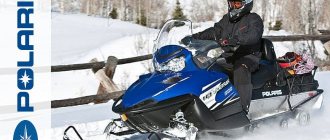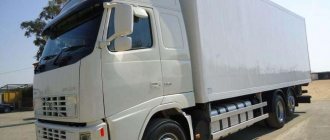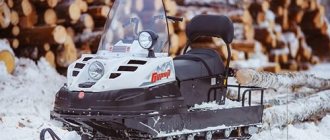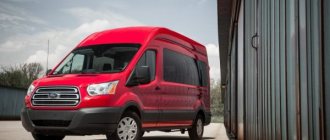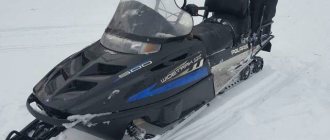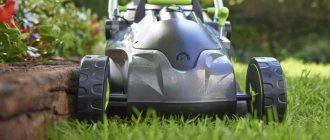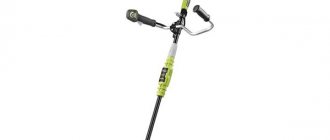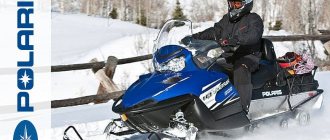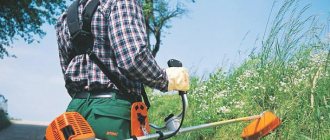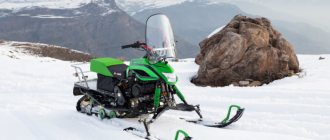The Polaris 600 IQ Widetrak is one of the most powerful utility snowmobiles available. The model is equipped with a time-tested unit with improved smooth operation and a modern design.
Polaris equipment is produced by a well-known American brand. The Widetrak series is considered the benchmark in its segment. Model 600 IQ is one of the company’s latest products (premiere year: 2010). It is based on an advanced chassis and a sports power plant. Unlike classic utilitarian snowmobiles, the Polaris 600 IQ Widetrak impresses with speed and power. Thanks to the new engine, acceleration is very fast and begins to fall only when exceeding 100 km/h.
The new unit required modernization of the platform, so the design of the machine was significantly redesigned. It has become more massive, but remains easy to control. The cross-country ability of the Polaris 600 IQ Widetrak has increased. Even the most difficult conditions are not scary for a snowmobile (a powerful engine and a wide track help out). The model is also perfect for utilitarian purposes. It is equipped with a comfortable passenger seat, a spacious trunk and underseat storage.
Engine characteristics
| Engine model | Liberty™ |
| Engine Configuration | Row |
| Number of cylinders | 2 |
| Engine cycle | 4 stroke |
| Cooling system | Liquid |
| Valve configuration | OHV |
| Cylinder diameter (millimeters/inches) | 77.3 / 3.04 |
| Piston stroke (mm/inches) | 64 / 2.52 |
| Engine displacement (cubic centimeters/cubic inches) | 599 / 36.5 |
| Starter type | Electric |
| Fuel requirements | Standard |
| Fuel type | Petrol |
| Turbocharging | — |
| Supercharger | — |
| Injector | + |
| Carburetor | — |
| Injection type | Direct injection |
| Emergency switch | Standard |
Descriptions and features of the unit
The main feature of the Polaris Widetrak IQ 600 is the presence of a 4-stroke two-cylinder 600 Cleanfire engine. Its work is based on a new fuel injection technology called Cleanfire Injection (CFI). The power plant is also liquid cooled, which was developed based on Liberty 600 technology, the main feature of which is the compact arrangement of the cylinder block.
The new engine has the same compression ratio and piston stroke that characterized the previous carburetor model. However, the system received some improvements that made it possible to use it in conjunction with fuel injection.
The CFI system supplies fuel through injectors, two for each cylinder. One of them is used at high speeds, and the other at low speeds. This allows you to increase engine output. As a result of this, the track “pulls” equally well both at high speed and during acceleration. The same principle of gas distribution is used in automobile engines.
Suspension
| Front suspension type | Independent A-frame |
| Front suspension travel (inches, millimeters) | 10 / 254 |
| Front suspension model | IQ |
| Front stabilizer | — |
| Shock absorber type | Adjustable shock absorber |
| Rear suspension travel (inches, millimeters) | 11 / 280 |
| Rear shock absorbers | 2 |
| Rear anti-roll bar | — |
| Front shock absorber model | Nitrex |
| Front shock absorber type | Gas Shock |
| Coilover | + |
| Rear shock absorber type | Gas IFP Shock |
| Type of central shock absorber | Gas IFP Shock |
Video
The Polaris 600 IQ Widetrak has a new double A-arm suspension that allows you to easily transport 2 people and 500 kg of cargo over any terrain. The driver's seat has been modified and has a new adjustable backrest. Comfort while driving was added by heated passenger seat grips.
The Polaris 600 IQ Widetrak is an excellent tractor that is highly maneuverable and stable. With him you can not be afraid to embark on the most difficult journeys. The model is perfect for foresters, fishermen, hunters and anyone for whom reliability is a priority. A spacious fuel tank allows you to spend less time refueling while traveling.
Other features of the snowmobile include:
- adjustable control column, which can be adjusted taking into account the driver’s parameters;
- Sturdy and easy to install Lock&Ride seat backrest. No tools are required to install it;
- heated steering wheel grips;
- electronic reverse with 2 modes and electric starter, improving the maneuvering process;
- heated glove compartment, allowing you to dry glasses, GPS navigator, gloves or other items. The glove compartment is located in close proximity to the steering wheel and allows you to quickly stow things away.
The basic configuration of the Polaris 600 IQ Widetrak is impressive. It includes:
- fixed steering wheel;
- electric starter;
- oil level/temperature indicator;
- speedometer;
- fuel gauge;
- tachometer;
- steering handles;
- heated steering wheel grips;
- 12V power supply;
- trunk;
- standard mirrors;
- windshield (560 mm);
- rear tow bar
Polaris 600 IQ Widetrak is not just a powerful workhorse, but a beautiful and attractive device that will appeal not only to hunters and fishermen, but also to lovers of an active lifestyle.
Specifications
| Footage) | 11.42 |
| Overall Width (inches/mm) | 48 / 1220 |
| Overall Height (inches/mm) | 52.8 / 1340 |
| Maximum ski base length (inches/millimeters) | 42.5 / 1080 |
| Minimum ski base length (inches/millimeters) | 42.5 / 1080 |
| Length (foot/foot) | 11 |
| Length (foot/inches) | 5 |
| Snowmobile Dry Weight (lbs/kg) | 671 / 304 |
| Fuel tank capacity (gallons/liters) | 14.3 / 54.1 |
| Engine displacement to weight | 0.89 |
Owner reviews
- Tundra-North: My father is fond of hunting, and he taught me to do this too. We've been riding Buran all our lives, but 3 years ago we replaced our old snowmobile with a Polaris 600 IQ Widetrak. The model was impressive. We traveled to taiga areas, the device had enough power under any load, even with 3 passengers, cargo and other rubbish. The advantages of the model are as follows: incredible traction, strong front end, relatively low fuel consumption even at high speed, reliable chassis, huge power reserves, unpretentiousness to Russian fuel, good design. Among the disadvantages, I would highlight not the best maneuverability (especially difficult in the forest), too much weight, excessive width and length (it’s very difficult to drive through the taiga) and poor handling at low speed.
- Equipment user: I bought a Polaris 600 IQ Widetrak in 2011 and have already driven more than 12,000 km. The car is reliable and starts in any weather. The sled pulls perfectly with a load of 400-700 kg. There have been no problems with the chassis or engine for 6 years. Average fuel consumption is approximately 22-25 liters (depending on speed and conditions). The snowmobile is reliable, nimble and powerful, I drove it in different places. During use, I changed the mudguard (it tore off almost immediately), the belt (3 times), and the spark plugs (3 times).
- Artem, Magnitogorsk: I liked the Polaris 600 IQ Widetrak. The snowmobile is excellent, it’s more comfortable to ride than the BRP Ski-Doo skandic wt 600 e-tec (compared with a friend). Accelerates in seconds. The maximum speed on it was 135 km/h. At the same time, the model is not considered completely sports and has excellent traction qualities. Filled with AI-92 gasoline. The disadvantages include high consumption at high speed - up to 50-55 l/100 km. Immediately after the purchase, I had to adjust the variator, and a knock was heard for a long time when starting off, but then it disappeared. There were no more problems in 3 years.
- Zimovik: For me, the Polaris 600 IQ Widetrak became the second snowmobile (I bought it after the LX). I purchased the device in 2012 at a big discount (it cost 340,000 rubles). In 4 months I drove about 1500 km and was satisfied (the check light does not light up, there are no breakdowns). The following season we had to replace the front lower control arms, which for some unknown reason were bent. In the third year, I heard a cracking sound in the box that appeared during sudden acceleration. It turned out that the chain had stretched. The next year we had to update the gooseneck and the alternator belt tensioner. At the same time, the dealer denied every problem and declared improper operation. I recently sold a snowmobile, but my feelings were twofold.
Seats
| Number of seats | Double |
| Seat adjustment | — |
| Material | Vinyl |
| Location | Driver and passenger |
| Folding seat | — |
| Number of seats | 2 |
| Back type | Removable |
| Backrest position | Driver and/or passenger seat |
| Lumbar support adjustment | — |
| Grab Rail or Strap | Standard |
Where to order and buy
You can buy a new snowmobile without mileage only from an authorized dealer. In this case, you will have to make a reservation. Since the model does not belong to budget trucks, it is not worth taking less than 500 - 550 thousand rubles. The cost of a sample with a four-stroke engine and an injector produced in 2012 varies between 600 - 730 thousand rubles.
Appearance
| Frame material | Aluminum |
| Housing panel material | Plastic |
| Frame model | IQ |
| FloorBoard Location | Driver and passenger |
| Slip resistance | + |
| Snowboard mount for tunnel | — |
| Handles | Standard |
| Saddlebag protection | — |
| Belt protection | + |
| Hand Guards | — |
| Shield protection | — |
| LightGuard | — |
| Snow protection | + |
| Steering wheel | Standard |
| Front bumper | Standard |
| Rear bumper | Standard |
| Ski material | Composite |
| Ski handles | Standard |
| Skag material | Carbide |
| Mountain steering wheel | Standard |
Manual for use
Each snowmobile comes with an instruction manual. The manual contains useful information for owners:
- snowmobile device;
- location of main signs;
- description of controls, mechanisms and components;
- recommendations for operation, safe driving methods;
- maintenance manual.
Among other things, in the manual you can find a list of typical faults, as well as methods for eliminating them. The manufacturer makes clear distinctions between maintenance that the driver can perform himself and maintenance that must be performed by the dealer. To perform the second type of maintenance, the owner should contact a specialized service center.
Controls
All main controls are located on the steering handles. An ergonomic digital display is used to monitor indicators.
The numbers in the figure indicate the following elements:
- brake lever;
- button for turning on the heated handles;
- turning on the gas trigger heating;
- reverse switch;
- control switch;
- switching the headlight light mode;
- engine stop button;
- gas lever.
The main elements of the multifunction display (see Fig. 4):
- analog speedometer (sometimes missing);
- digital display;
- engine status indicator (lights up in case of a malfunction);
- overheat sensor;
- parking brake indicator;
- reverse activation indicator;
- high beam indicator lamp.
Recommendations for engine break-in
When purchasing a new snowmobile, it is important to strictly follow the manufacturer's recommendations. Only in this case can the life of the engine and other important parts of the all-terrain vehicle be extended. The break-in period is the time during which the first full tank of fuel is exhausted.
During the first full refueling, add engine oil directly to the gasoline. This will allow the engine parts to run in correctly. It is highly not recommended to use mixtures of different brands of motor oils. This can lead to filter clogging, sediment, and thickening of the mixture at low temperatures.
Daniila Rukin
Snowmobile specialist "Buran". I go fishing in my free time.
Ask a Question
If you take semi-synthetic oil, this will speed up the break-in of the piston rings. The manufacturer recommends using Polaris Premium 2-circle semi-synthetic oil during the first refueling.
Mixing proportions:
| Attitude | Semi-synthetic oil | Fuel |
| 40:1 | 473 ml | 19 l |
| 1l 347 ml | 54.1 l |
The fuel mixture should be prepared in a separate container. It is strictly not recommended to add motor oil directly to the gas tank.
What to take with you on a trip
The manufacturer recommends that you always take the instruction manual with you when traveling. Also, in order to provide additional protection, the following kit should be kept on board the all-terrain vehicle at all times:
- spare set of spark plugs and variator belt;
- towing cable;
- first aid kit;
- road map;
- fuel defrost;
- motor oil supply;
- winter rescue kit.
You should also take a full set of tools and emergency communications equipment on every trip.
Chassis Polaris Pro-rmk 600 155
New 2016 chassis AXYS RMK. The AXYS platform is not used on trail snowmobiles, but was designed specifically for mountain snowmobiles. Other manufacturers should take a look at this lightweight chassis. Consumers quickly caught on, which is why Polaris not only won the weight race, but also came out ahead.
Polaris engineers decided that a carbon fiber upper would be best suited for weight savings. Carbon fiber is used in many industries where weight is critical. The lighter chassis simplifies all aspects of snowmobile handling, especially on long descents.
Polaris' PowderTrac running boards are durable and designed to resist snow accumulation. Snowmobile manufacturers have long learned that when snow accumulates in the running boards, it increases the overall weight of the machine. Polaris designers put a lot of effort into developing the Pro-RMK running boards. You can see that half the area of the running boards are open areas through which snow is dumped.
For several years now, Polaris' innovative QuickDrive belt drive system has been the only belt system available on snowmobiles from the factory. Polaris representatives claim that thanks to it they were able to reduce rotational inertia by 21%. In addition, the belt system does not require any maintenance, oil or tension system. All this has a positive effect on increasing engine speed and the responsiveness of the snowmobile, which is especially important when driving in deep snow.
Creating a premium snowmobile is impossible without the use of high-quality shock absorbers. Polaris engineers selected Walker Evans Monotube shocks, the lightest in the Walker Evans range. Customers seem to really like coilover springs, although many manufacturers continue to use air shock absorbers.
The designers installed the Series 5.1 track on the 600 Pro-RMK snowmobile. its dimensions are 15 inches × 155 inches × 2.4 inches, the track works perfectly in tandem with the two-cylinder 600 engine.
Controllability
Polaris continues to boast the legendary balance of the RMK chassis. When we weigh our demo sleds each year, we lift them by the steering column. The RMK is the sled that sits most parallel to flat ground. Balance is one of the unsung heroes when it comes to handling characteristics, as many of them depend on balance. Predictability is equally important. When the chassis is well-balanced and predictable, the driver has much more control, increasing confidence and enjoyment.
Improvements
Based on the fact that mountain snowmobile riders prefer short seats that allow them to easily transition from one side to the other, Polaris continues to use the Pro-Lite seat. It has an elegant design and a thick layer of foam.
It's no secret that LED lamps shine brighter and require less energy, in addition, they have penetrated into all areas of our lives: in our homes, cars, and aviation. Polaris decided to use the trend to their advantage without increasing the weight and making the headlights brighter. LEDs are almost 450 gr. lighter than conventional incandescent bulbs previously found on snowmobiles. In addition, unlike incandescent lamps, LED lamps will not cause the filament to ignite.
Polaris engineers and designers paid special attention to the side panels of the AXYS chassis. Often, when conquering steep slopes, a snowmobile can get stuck deep in the snow, then the side panels will become the only salvation in order not to get completely stuck. In such a situation, the driver has no control over the car. The snowmobile can work like a forklift and go straight down the mountain. When you have to get out of the snow using the side panels, this is not very good.
